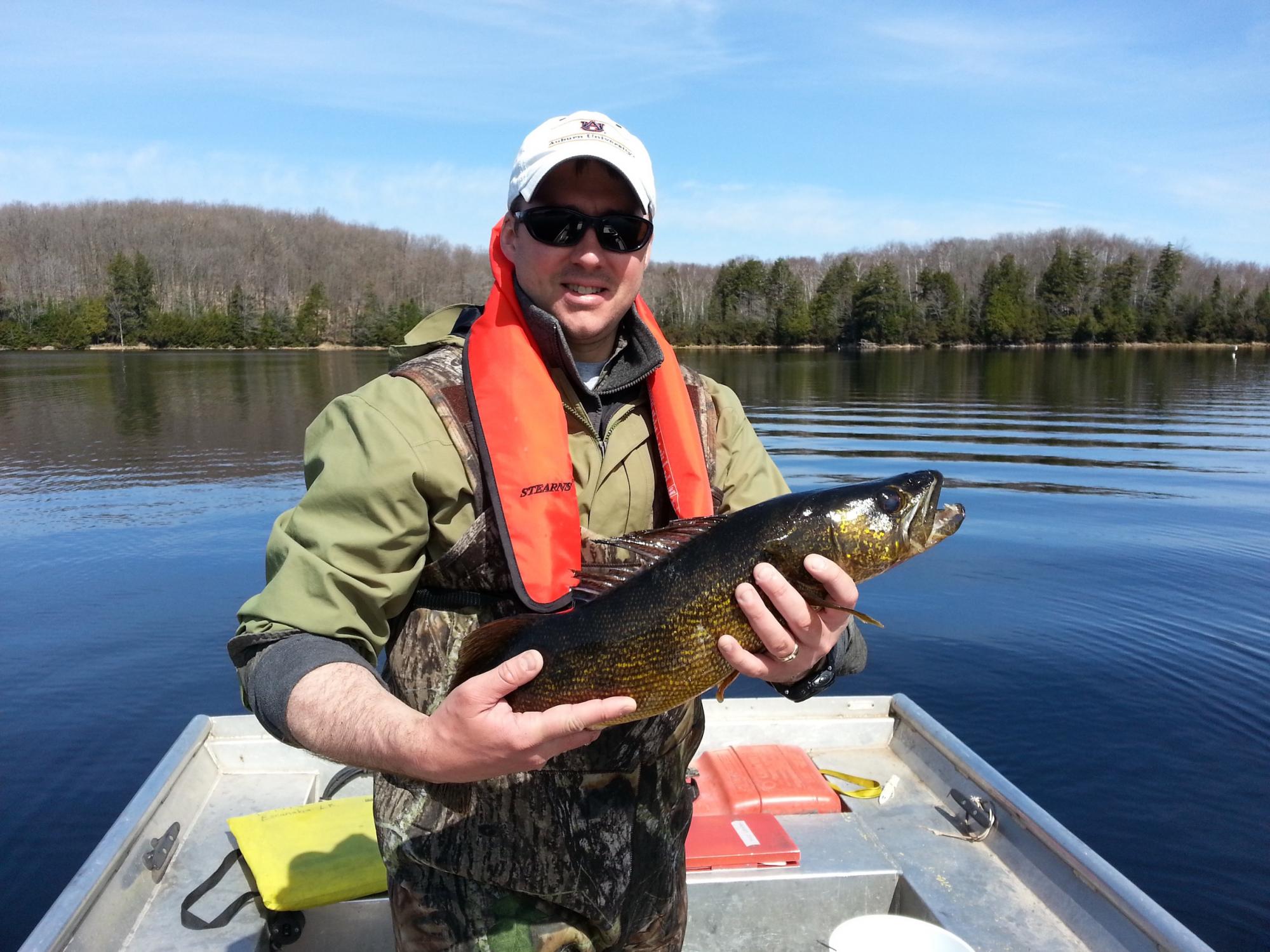Quick Summary
- It now takes 1.5 times longer to produce the same amount of walleye as it did in 1990
- Walleye decline accompanied rise in lake temperatures
- Anglers, agencies and tribes need to work collaboratively on strategies to move forward
Walleye, an iconic native fish species in Wisconsin, the upper Midwest and Canada, are in decline in northern Wisconsin lakes, according to a study published this week in the Canadian Journal of Fisheries and Aquatic Species.
The study does not pinpoint the exact causes for the decline, though it suggests it is likely a combination of factors, including climate change, habitat degradation and harvest rates that might at times outpace production levels if not monitored closely. Additional research is ongoing regarding what declining production means for future walleye harvests in this region.
‘Something is not right’
For the study, researchers analyzed production statistics collected between 1990 and 2012 for adult walleye populations in Wisconsin lakes. They found that annual walleye production across all lakes decreased by 27 percent during that time. It takes 1.5 times longer to produce the same amount of walleye biomass, or fish weight, now as it did in 1990.
Lakes experiencing declines are often stocked with walleye to make up for a loss in natural production. However, the data show that stocked lakes have seen larger declines in walleye production. Lakes with a mixture of both stocked and naturally reproducing walleye experienced declines of 47 percent, while lakes with only stocking and no natural reproduction declined by 63 percent.
“This is a clear warning sign that something is not right,” said lead author Andrew Rypel, an ecologist at University of Wisconsin-Madison and the Wisconsin Department of Natural Resources during the time of the study. He is currently an associate professor and the Peter B. Moyle and California Trout Chair in Coldwater Fish Ecology at the University of California, Davis. “The results suggest that anglers, tribes and resource management agencies will all need to work together to craft new science-based management policies for moving forward.”
About walleye

Rypel, who grew up in Wisconsin fishing walleye, notes that walleye are “kind of a big deal” in the area. As salmon are to the West, walleye are to this region. People travel to the state’s Northwoods just to fish for walleye; a large Catholic population enjoys them for Friday fish fries; and Native American tribes spear walleye in the early spring in accordance with their cultural and religious traditions. The meat is prized for its flaky, mild and sweet flavor.
“People catch and release bass,” Rypel said. “That’s not the case with walleye. People love to eat walleye.”
Threats to walleye
Bass like warmer waters, and unlike walleye, their populations have increased over the study period. Walleye require cooler waters, and their decline has accompanied a rise in lake temperatures. This points to climate change as one factor in the loss of walleye that the authors say should continue to be examined.
Habitat alteration, residential development around walleye-bearing lakes and indirect food web interactions are likely additional factors.
Another complication is that while most Wisconsin lakes are dominated by low-producing walleye populations, some of the highest-producing walleye lakes are used to estimate sustainable harvest for the region. Consequently, studies on those healthier walleye lakes may not adequately represent the overall walleye population.
Action is underway
State, tribal and community leaders have already taken several actions to help the struggling walleye. These include major stocking initiatives, new fishing regulations, programs to enhance habitat, bass removals and even moratoriums on walleye harvests.
“Most people interested in the outdoors, fishing and hunting are interested in leaving something for future generations, hopefully something better,” Rypel said. “It’s essential that we work collaboratively when we see trends that fisheries like these are in decline.”
Co-authors on the study included Greg Sass from the Wisconsin Department of Natural Resources, and Daisuke Goto and M. Jake Vander Zanden from the University of Wisconsin-Madison.
The study was funded by the Wisconsin Department of Natural Resources, the United States Geological Survey and the National Science Foundation’s Long Term Ecological Research Program in North Temperate Lakes.
Media Resources
Kat Kerlin, UC Davis News and Media Relations, 530-750-9195, kekerlin@ucdavis.edu